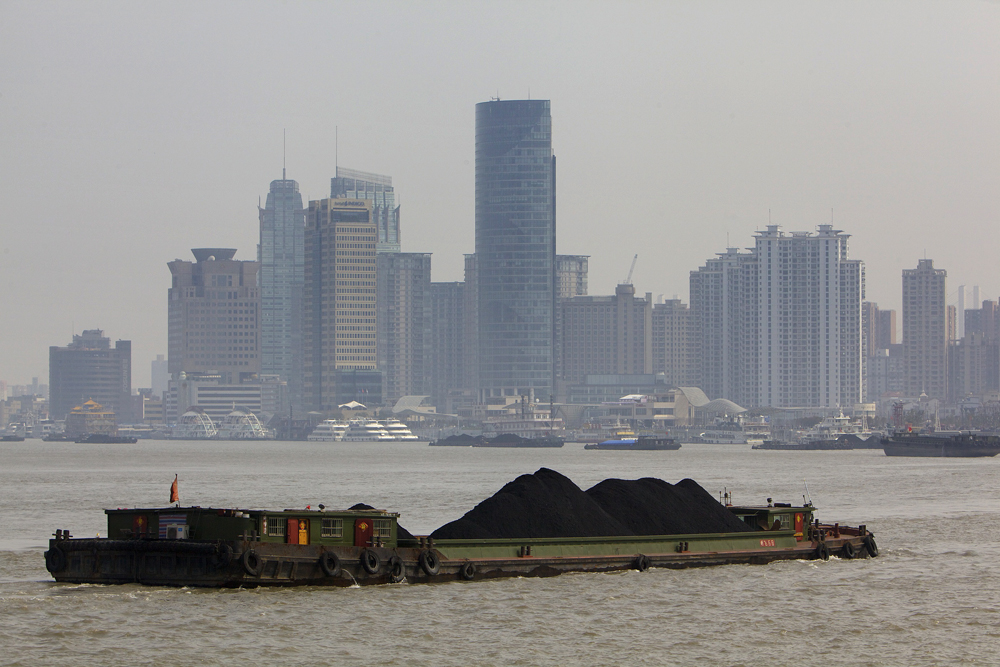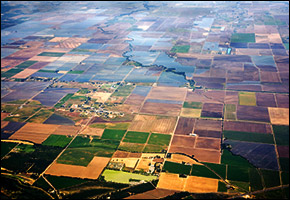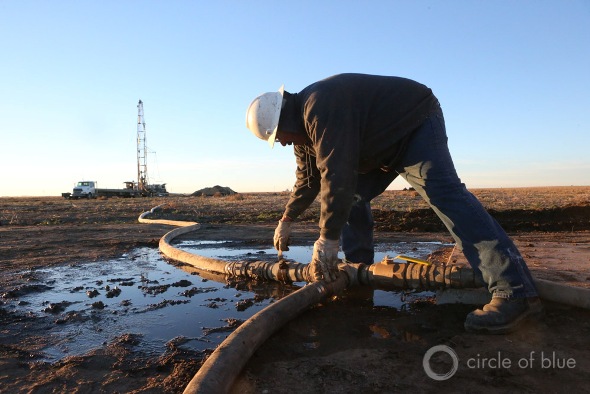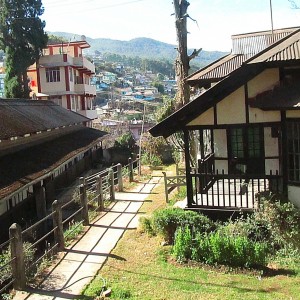With Moisture Scarce, California Water Providers Turn to Economic Tools
California’s record drought prompts water districts to increase conservation spending, drain rainy day funds, and dramatically swell water rates.
By Brett Walton
Circle of Blue
Orange County, California – With reservoirs near historic lows and aquifers being pumped at record pace, agencies that provide drinking water for millions of Californians are calling upon the power of the dollar to help them through a drought crisis that shows no sign of abating.
Two water districts in Southern California will spend a total of $US 80 million this year to tear out lawns, replace inefficient toilets, and purchase more water imported from the Colorado River, a distant source that itself is in a 14-year dry spell.
Farther north, a district east of Sacramento, in an attempt to cut water consumption by 40 percent, is considering a dramatic rate increase for the heaviest users.
Taken together, the economic responses to the drought reveal two consequences: that the price of water will rise to pay for these programs and that this drought, if it continues much longer, will test the financial stability of many municipal water systems, which are tapping reserves and face higher prices for water delivered by state and federal canals.
“In a prolonged drought, a simultaneous increase in water prices and reduction in usage would put import-dependent utilities under pressure, forcing large and difficult-to-impose rate increases,” claims Fitch Ratings, a credit rating agency.
Trading Grass for Green
As each sunny winter day passes, California’s drought is deepening. Most of the state’s precipitation falls between November and April, and the last few months were essentially cloudless. Water managers are wishing for a “March miracle” snowfall to pull the state out of an abysmal water deficit.
Water is in such short supply that President Obama traveled on February 14 to the Central Valley, where many of the nation’s fruits and vegetables are grown, to announce a drought aid package and to look at dusty fields.
Farmers in the Central Valley who rely on rivers will certainly be the hardest hit this year. However, urban Southern California is better positioned than other parts of the state to weather the drought, at least in the short term.
Southern California went into 2013 having nearly brimmed its reservoirs during a wet 2011, said Deven Upadhyay, water resources manager for Metropolitan Water District, which sells water to most of Southern California’s cities.
Though it will not get much water from a state canal that moves supplies from the north to the south, Metropolitan will get a full allotment this year from the Colorado River. In addition, the district will receive water transferred from nearby irrigation districts, deals hammered out years ago.
“That sets us up well for 2014,” Upadhyay told Circle of Blue. “We may pull on storage and rely on that to get through the year.”
Assuming the drought continues, Metropolitan recently took a small step to prepare for a string of dry years. It will ramp up investment in conservation.
Last week, the board approved a doubling of its conservation budget, to $US 40 million annually for the next two fiscal years. Most of the money will be paid to customers who rip out turf grass and plant species adapted to a dry climate. Between 40 and 60 percent of residential water use in Metropolitan’s service area goes toward landscaping, Upadhyay said. Considerable water savings can be had if more agave and yucca take root.
Draining the Reserves
Many of Metropolitan’s customers are making significant investments in water treatment infrastructure that decreases its risk during drought by developing local supplies: groundwater, recycled wastewater, and capturing rainfall.
One of those customers is the Orange County Water District, a wholesaler and a groundwater manager. In 2008 it completed the world’s largest facility for turning sewage water into supplies that are available for drinking, a $US 481 million plant that produces 70 million gallons of treated water each day, enough for 600,000 people. The treated water is pumped to basins in northern Orange County where it percolates into the aquifer, closing part of the district’s water supply loop.
The project has been so successful in reducing the need to purchase water from Metropolitan that the district is in the middle of a $US 142 million expansion, due in 2015.
But even those big investments are no match for the thirst for groundwater in a drought. Denis Bilodeau, one of 10 water district directors, told Circle of Blue that in the last few years more water was pumped out of the aquifer than filtered back in.
To keep the aquifer from dropping dangerously low, Bilodeau said the district would spend its entire $40 million reserve to buy untreated water from Metropolitan and use it to recharge the aquifer. That means water from the Colorado River will travel by canal 389 kilometers (242 miles) across Southern California so that it can soak into the ground in Orange County.
Bilodeau argued the district really had no other choice.
“We want to buy water now when it’s available,” he said. “It might not be available to buy when we need it. The worst thing would be having no reserve money to buy water and having to issue debt.”
The reserve, which was also tapped in 2011 to fill the aquifer, will be replenished with higher rates, Bilodeau said.
Keeping Water in the Bucket
On an overcast February afternoon, Folsom Lake, 32 kilometers (20 miles) east of Sacramento and depleted of water, looks like a strip mine. Jacked-up Toyota Tacoma trucks drive through sandbars and around rock outcrops to reach the ebbed shore.
The water level here, at 29 percent of capacity, is among the lowest of California’s 11 major reservoirs. If not for an assuaging storm two weeks ago, the reservoir might have shrunk low enough to expose the water intake for the San Juan Water District, which wholesales to 165,000 people. The district would then have relied on emergency pumps from the federal Bureau of Reclamation, which operates the dam, in order to access its water supply.
“We’re breathing easier, but there’s still not a lot of storage,” Keith Durkin, assistant general manager of San Juan Water District, told Circle of Blue.
Because the reservoir is uncomfortably low, the district wants to reduce water use by 40 percent for the 30,000 people it serves directly through retail sales. By using a tiered rate system, customers who reduce their consumption in line with the district’s goal will pay roughly 12 percent less for water. Those who use large volumes of water but do not cut back may see their bill rise by 43 percent.
Conservation is laudable, but there is a drawback. Most of the district’s revenue comes from water sales. Such a deep cut in consumption means a $US 1 million shortfall, a deficit the district will fill by dipping into reserves.
Ahead of the board’s final vote on the proposal on February 26, district officials are working hard to ensure the community understands the need for higher rates, which would take effect at the end of April.
“We’re going to a lot of Rotary meetings,” Durkin said.
Brett writes about agriculture, energy, infrastructure, and the politics and economics of water in the United States. He also writes the Federal Water Tap, Circle of Blue’s weekly digest of U.S. government water news. He is the winner of two Society of Environmental Journalists reporting awards, one of the top honors in American environmental journalism: first place for explanatory reporting for a series on septic system pollution in the United States(2016) and third place for beat reporting in a small market (2014). He received the Sierra Club’s Distinguished Service Award in 2018. Brett lives in Seattle, where he hikes the mountains and bakes pies. Contact Brett Walton










